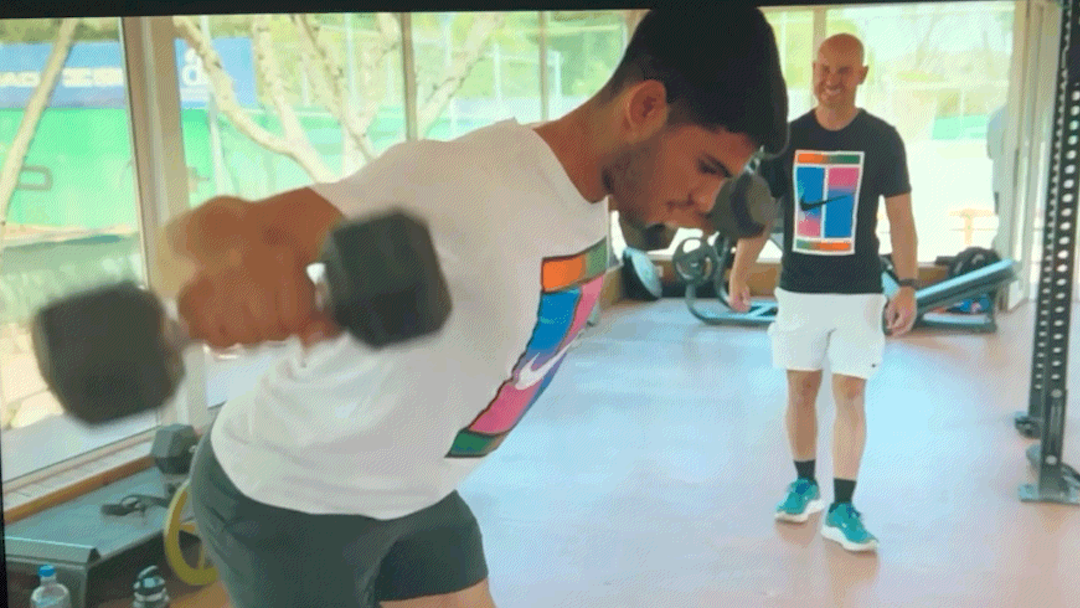In the fall of 2021, I played a practice match at a local area high school where someone had chalk-marked stations for cardio fitness circuits. Each exercise was scrawled on the court along the sidelines and fence. One of the scrawled-out exercises simply read “Speed through” with “double back” on a new line. This turned out to be somewhat of a mystery.

At the time, I assumed that someone was conducting a CrossFit workout using the tennis courts as a site. However, these two phrases aren’t typically used in conjunction with that particular fitness cult… er… I mean movement. Making that discovery raises the very real possibility that each station was put there by the Lake Highlands High School tennis coach as a functional workout designed specifically for tennis. Additional evidence that supports that theory is forthcoming in this series.
In the interim, we must resort to exegesis of the chalked messages to interpret the meaning. Ultimately, I broke it down into two parts. The phrase “Speed through” in this context probably means to perform the movement as quickly as possible. To me, the “Double Back” instruction would be to turn around and return on the same path.
Ultimately, additional markings on the court surface seem to trace out a path for this exercise. I believe the exercise to be performed at this station was a forward sprint to an endpoint where the “double back” would occur. The sprint in the reverse direction might have been performed by making a U-turn and sprinting back to the starting point. However, it is possible that the intention was to backpedal in the reverse direction.

Performing two short sprints in succession is excellent for tennis players as it mirrors the explosive bursts and quick directional changes required during a match. Tennis involves frequent stops, starts, and rapid adjustments, so if that was the intent, the movement enhances agility and builds fast-twitch muscle fibers essential for speed and power. These sprints also develop the ability to recover quickly between shots during a dynamic tennis point. Additionally, back-to-back sprints reinforce efficient footwork and develop endurance.
If the “double back” instruction were intended to direct running backward to return to the starting point, it would add even greater value for tennis training. Backpedaling is an essential movement in the sport as it helps players recover efficiently to a neutral position after advancing toward the net or returning deep shots. Running backward trains balance, control, and agility, ensuring players can reposition themselves quickly without compromising stability. Additionally, that movement strengthens key muscle groups like the glutes, hamstrings, and calves which enhances core stability and coordination.
Unless someone who participated in those original training sessions comes forward, I will never know the original intent behind those chalked instructions. However, their very presence underscores the versatility and adaptability of using a tennis court for fitness training. Whether the exercises were designed for tennis players or as part of a general fitness group, they serve as a reminder of the importance of dynamic, functional movements in athletic development.
Inviting CrossFit groups to train on tennis courts could be an excellent way to expose non-tennis players to the sport. Pairing these sessions with red-dot cardio tennis could provide a fun and engaging gateway for fitness enthusiasts to experience tennis while benefiting from its physical and social aspects. It is a creative approach that could help grow the game.



